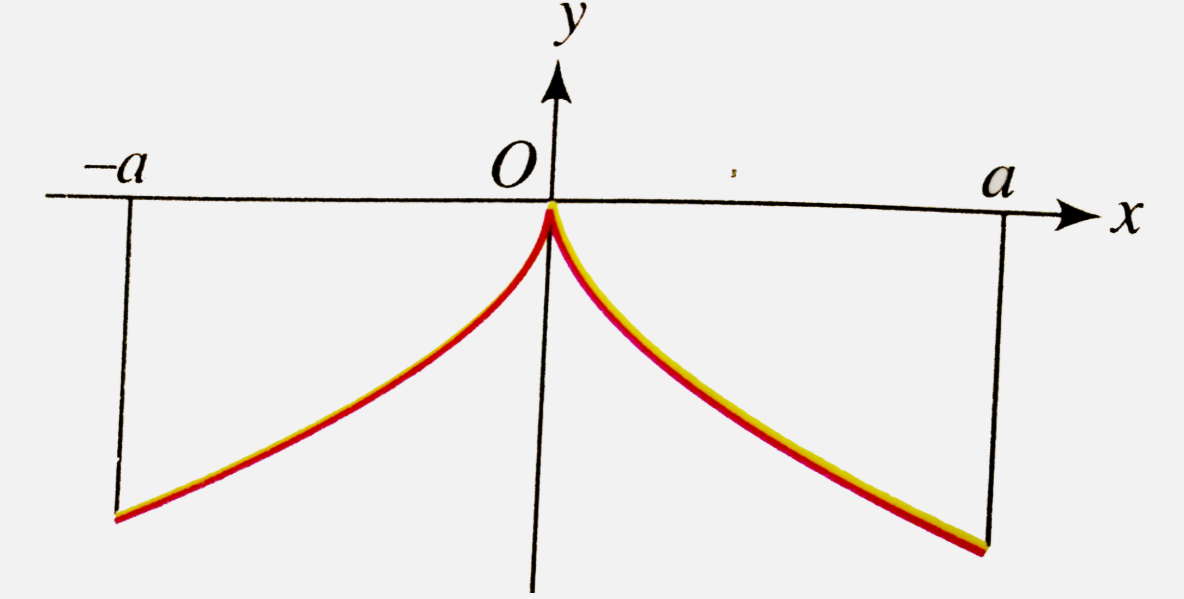The sum of roots of the equation cos−1(cosx)=[x],[.] denotes the greatest integer function, is 2π+3 (b) π+3 (c) π−3 (d) 2π−3Solution in Bengali
We have cos−1(cosx)=[x]
To find the roods of the equation, we draw the graphs of y=cos−1(cosx) and y=[x] and then find the points of intersection.

From the graph, roots are 0, 1, 2, 3, and the value ot x for which 3=2π−xorx=2π−3. Hence the sum of roots is 2π+3
Topper's Solved these Questions
- GRAPH OF INVERSE TRIGONOMETRIC FUNCTIONSBOOK - CENGAGE PUBLICATIONCHAPTER - GRAPH OF INVERSE TRIGONOMETRIC FUNCTIONSEXERCISE - Exercises
18 Videos
- GETTING STARTED WITH GRAPHSBOOK - CENGAGE PUBLICATIONCHAPTER - GETTING STARTED WITH GRAPHSEXERCISE - Exercises 1.18
1 Videos
- GRAPHICAL TRANSFORMATIONSBOOK - CENGAGE PUBLICATIONCHAPTER - GRAPHICAL TRANSFORMATIONSEXERCISE - ILLUSTRATION
78 Videos
Similar Questions
Draw the graph of y=tan−1x−cot−1x.
View SolutionFollowing is the graph of y = f'(x) and f(0) = 0 .

(a) What type of function y = f'(x) is ? Odd or even?
(b) What type of function y = f(x) is ? Odd or even?
(c) What is the value of ∫a−af(x)dx?
(d) Has y = f(x) point of inflection?
(e) What is the nature of y = f(x)? Monotonic or non-monotonic?
View SolutionPlot y=|x|,y+x−2∣,andy=|x|2∣
View SolutionThe sum of roots of the equation cos−1(cosx)=[x],[.] denotes the greatest integer function, is 2π+3 (b) π+3 (c) π−3 (d) 2π−3
View SolutionLet S⊂(0,π) denote the set of values of x satisfying the equation 81+|cosx|+cos2x+∣cos3x∣→∞=43 . Then, S= {π/3} b. {π/3,2π/3} c. {−π/3,2π/3} d. {π/3,2π/3}
View SolutionThe value of the integral ∫π−π(1−x2)sinxcos2xdx is (A) 0 (B) π−π33 (C) 2π−π3 (D) π2−2π3
View SolutionIf f(x)=2x(sinx+tanx)2[x+2ππ]−3 then it is (where [.] denotes the greatest integer function)
View Solutionlimx−π2[[sinx]−[cosx]+13]= (where [.] denotes the greatest integer integer function)
View SolutionThe sum of the solutions in (0,2π) for the equation cosx cos (π3−x)cos(π3+x)=14 is
View SolutionThe sum of roots of the equation cos−1(cosx)=[x],[.] denotes the greatest integer function, is (a) 2π+3 (b) π+3 (c) π−3 (d) 2π−3
View SolutionLet S⊂(0,π) denote the set of values of x satisfying the equation 81+|cosx|+cos2x+∣cos3x∣→∞=43 . Then, S= {π/3} b. {π/3,2π/3} c. {−π/3,2π/3} d. {π/3,2π/3}
View SolutionLet S⊂(0,π) denote the set of values of x satisfying the equation 81+|cosx|+cos2x+∣cos3x∣→∞=43 . Then, S= {π/3} b. {π/3,2π/3} c. {−π/3,2π/3} d. {π/3,2π/3}
View Solutionlimx−π2[[sinx]−[cosx]+13]= (where [.] denotes the greatest integer integer function)
View SolutionIf f(x)=2x(sinx+tanx)2[x+2ππ]−3 then it is (where [.] denotes the greatest integer function)
View SolutionThe sum of roots of the equation cos−1(cosx)=[x],[.] denotes the greatest integer function, is (a)2π+3 (b) π+3 (c) π−3 (d) 2π−3
View SolutionLet S⊂(0,π) denote the set of values of x satisfying the equation 81+|cosx|+cos2x+∣cos3x∣→∞=43 . Then, S= {π/3} b. {π/3,2π/3} c. {−π/3,2π/3} d. {π/3,2π/3}
View Solution
